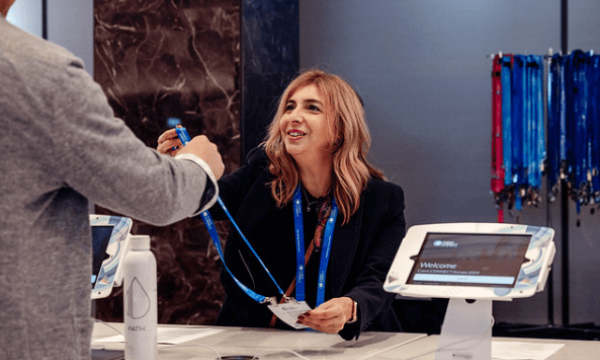Recently, I got the chance to work in event technology services. We call it an ‘onsite’: working event tech support for one of our client’s events.
It was the first time I’d be on the customer-facing side of things (I work in communications; we don’t get out much). Though I was nervous, I was told that the client was already familiar with the technology.
So, I wondered, what would we be doing at the conference?
A lot, as it turned out.
While the attendees generally were on good terms with the event tech, I was surprised to see the amount of support that I and my colleague provided. It wasn’t so much about troubleshooting for individual attendees (though we definitely did that), but the amount of event tech upkeep that we helped keep off of the event planner’s plate.
Because your event tech is, at the bottom line, a tool, it’s important to make sure it is properly maintained and integrated throughout your event.
Here are a few signs that you should get onsite support for your event tech:
Your attendees/speakers want to know how to use the event app
No matter if it’s your first time using an event app, or the event has never run without one, there will typically be some number of questions from your audience.
If they’re at a manageable level, and your event staff are well-versed in the app, you may be able to get away with some additional training to make sure that you and your colleagues are all up to speed.
However, if you anticipate a good number of questions—at the event I attended, for example, we spent most of the morning on the first day helping attendees access old logins on the event app—or would otherwise prefer to cut out uncertainty and clogged registration desk lines, it can be a good idea to have dedicated persons answering the questions.
You’re running polls or Q&A sessions
With polls and surveys, the results are available instantly—through the backend of the app. However, for security reasons, typically only a few key members of staff have administrative access. Which often means that they’re too busy with other things to be on hand to run polls!
At the event I attended, several of the speakers wanted to use live polling at their session; this allowed the audiences to put in their vote, and within minutes, be able to see the consensus of their colleagues in the room. This also gave speakers the ability to speak to the points that the audience was most interested in, making for more dynamic and tailored sessions.
In order to make the process flow smoothly, myself or my colleague would be sitting in the sessions with the A/V managers, first testing and then flipping up the correct screens when necessary. As an alternative to a dedicated event tech support person, it’s also possible to assign someone with administrative access to sit in to run the polls during a session. This isn’t always possible for the event planners and event staff who are dealing with other tasks.
You need moderation for live content
One of the most nerve wracking things that I did during my stint as event tech support was moderate the Q&A submissions for the interview with the CEO of a well known airline.
The event app allows audience members to submit questions to a particular session while the session was on-going. However, the interviewer wouldn’t have time to scan through the questions during the interview; the event planner also wanted to make sure that the questions asked were appropriate, interesting, and varied.
My job was to communicate the submitted questions to the event manager, acting as the go-between between her and the team who would then send the questions to the on-going conversation on stage. This required that I stay for the duration of the keynote, preparing questions (filtering, editing, and formatting) the questions as they came in so that they would be ready when they were needed.
By having a dedicated person who could moderate the submissions and streamline the process, the event planner and her team was free to deal with other issues.
You anticipate last-minute content changes
Few events run exactly as planned—that’s just the nature of the beast! Luckily, with the inclusion of event apps at conferences and meetings, it’s no longer necessary to run to the printer with last minute changes or schedule updates.
An event app will reflect any content changes within minutes of the change being made—it only requires a wifi connection.
This means, of course, that when these changes DO pop up, someone with administrative app access has to go in to input the new information, and even send a notice out to attendees as necessary. It’s not uncommon for event tech support teams to receive a list of changes the morning of the event!
Event App Support is Key to Participation
Of course, the assumption is that you want attendees to be using your event app, and to make good use of your event technology.
While event apps have a lot of great utility for conferences and meetings, and have in fact changed the landscape of attendee experience, they still require upkeep and support during your event. The job of the event tech support team is to make sure that the hard work you’ve put into creating the event app pays off.
Whether that means inputting changes, sitting in on sessions to run live polls and moderation, or helping attendees in person, having the right type and amount of event app support is crucial to running a smooth event with engaged and active participants.




